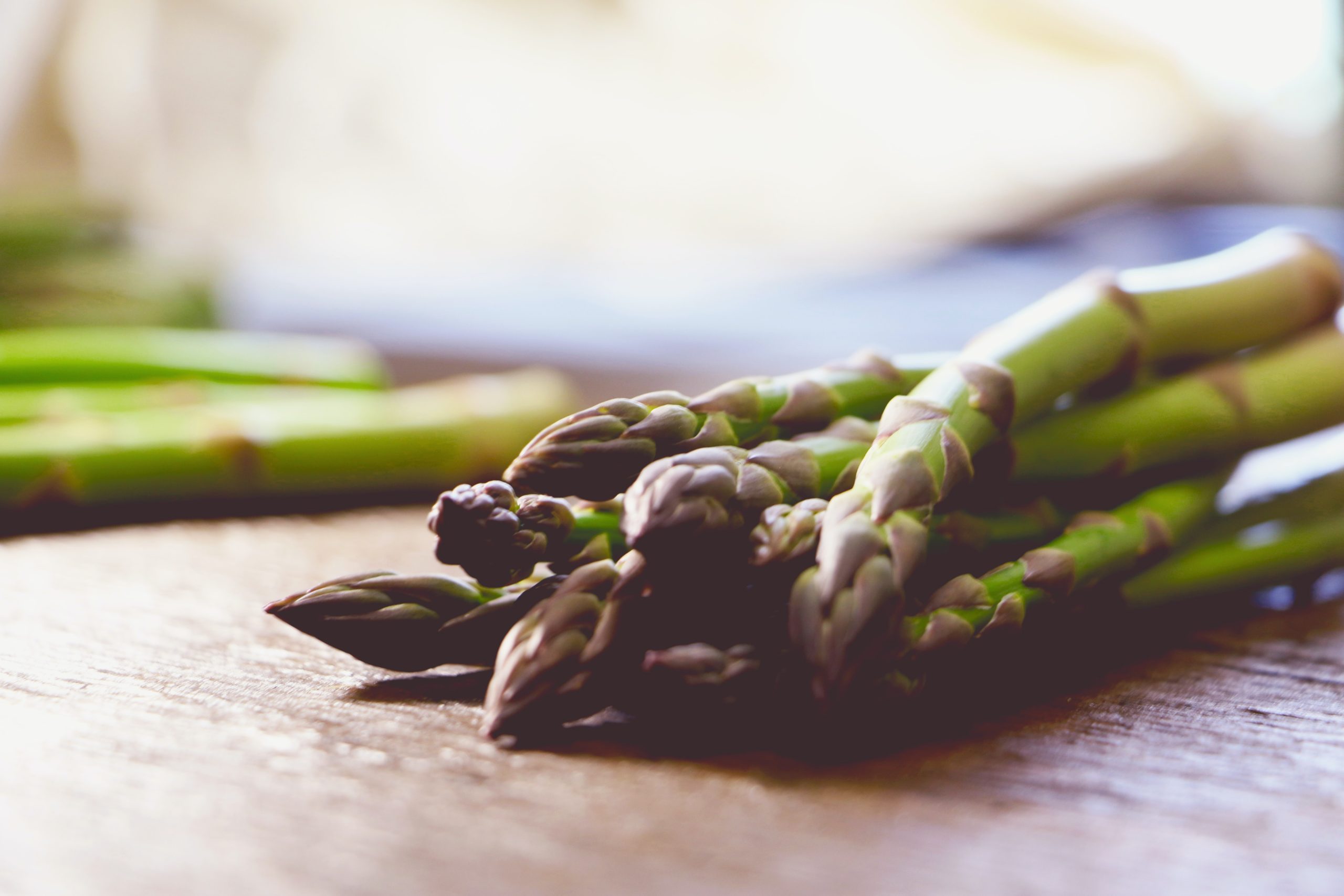Asparagus is a nutrient-packed perennial, meaning this good-for-you veggie will produce year after year when properly cared for.
Yes, that does mean it takes years to develop a crop of healthy asparagus, but the payoff is worth it.
We started growing asparagus at Stoney Creek Farm about 5 years ago. At first, our asparagus wasn’t thriving. But after we found the perfect spot for it, we just had our best crop yet this past summer.
It is really hard to describe just how wonderful the taste of fresh asparagus from your garden is — trust me, it’s incredible!
Though the days are getting shorter and our gardens are getting emptier, now is the time to start planning for your perennial veggies like asparagus.
We don’t want you to make the same mistakes we did when first trying to cultivate asparagus, so keep reading to learn the basics of asparagus care.
When to Plant Asparagus:
Early spring, like February or early March, is the best time to plant asparagus. We recommend growing your asparagus from dormant crowns that are a year old, since growing asparagus from seed can be very difficult and slow.
Where to Plant Asparagus:
It’s all about location, location. Especially in asparagus real estate. Transplanting asparagus is difficult and not recommended, so be intentional about the spot you choose.
Asparagus needs a minimum of 7 – 8 sunny hours per day. However… you don’t want to encourage spear growth too quickly, since early-developing spears can be easily killed by late freezes in the springtime. For that reason, planting your asparagus on north or east slopes is preferable, since these warm more slowly than south or west slopes.
Plant your asparagus out to the side of the garden, next to other perennials and away from busy gardening activities.
In Tennessee, asparagus does really well in the higher elevations of East Tennessee, but it can still adapt and thrive when planted in suitable locations in other parts of the state.
Learn from us…
When we originally planted asparagus about 5 years ago, we began growing them in our herb garden. Turns out, it was not thriving at all in that area. We determined it had too much shade and not enough drainage for the asparagus starts, so we moved the plants to a raised bed which receives 8 hours of sun per day.
It took 3 years for the transplanted asparagus to really take off — but the wait was worth it! We had our best crop yet this past summer.
Soil & Water Needs:
Like most veggies, asparagus is happiest in well-draining soils that allow for deep root development, like sandy loams. If your soil is clay-based or shallow, you’ll need to amend it appropriately.
Additionally, asparagus prefers a pH balance of 6.0 – 6.5. If you aren’t in the habit of regularly doing so, we recommend testing your soil before planting. The report will provide suggestions for soil amendments.
During the first growing season, water once a week to 1 foot deep; this could be up to 1 inch of water. After the first season, water your asparagus every other week. A 2 inch layer of mulch is a great option for retaining moisture.
When to Harvest Asparagus:
As excited as you may be to enjoy your first round of homegrown asparagus, you should avoid harvesting asparagus the year you plant it.
During the second year, you can begin harvesting — but go easy. Perform a light harvest over the course of a couple weeks. This will increase the number of buds on the crowns, which will lead to higher crop production in later years.
During the third year, you can harvest over the course of 4 weeks, and then all years after that, you can enjoy a harvest of about 6 – 8 weeks.
(Patience is a virtue, right?)
This TN Ag Extension guide offers this advice for harvesting asparagus:
“Harvest by snapping the spears off at the ground level when they are 6 to 10 inches tall. This will result in less damage to unemerged spears and less chance of introducing disease into the plant than the traditional harvesting method of cutting the spears below the ground level. It is desirable to harvest at least every other day during cool weather and every day during warm weather to prevent spears from growing too tall. Too many spindly spears indicate weak storage roots. Cease harvest for the season if too many spindly spears appear.”
More resources for growing asparagus:
For deeper reading into how to grow your own asparagus, check out this guide from the TN Ag Extension.
Want a visual example for how to plant asparagus? The Volunteer Gardener offers this video showing you how to do so.


